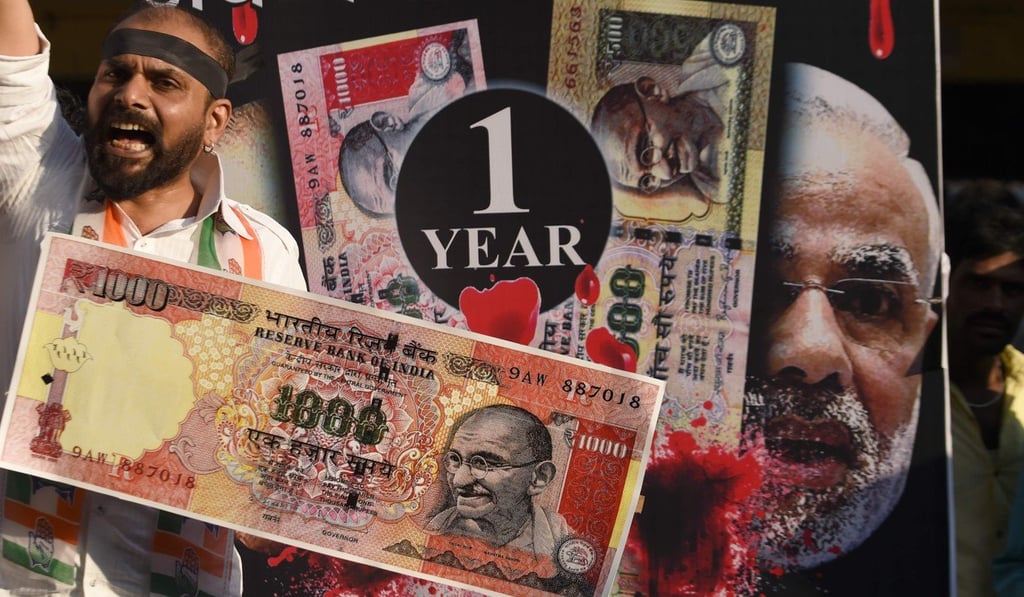Advertisement
How India’s neglect drives Nepal into China’s outstretched arms
- New Delhi and Kathmandu are close allies with a long history who enjoy a number of close cultural, linguistic and religious ties
- But recent moves, such as the controversial demonetisation of high-value rupee notes by India, have soured bilateral relations
Reading Time:4 minutes
Why you can trust SCMP
0

When Indian Prime Minister Narendra Modi announced in November 2016 the overnight removal of all 500 and 1,000 rupee notes from circulation, it was framed as a crackdown on the black market, illicit money and counterfeit cash.
This decision to declare about 86 per cent of the paper money in circulation, by value, null and void was met with both opprobrium and applause at the time. It is still not clear, 27 months later, if it has achieved its stated aims.

But demonetisation did succeed in doing something that New Delhi may come to regret – driving a wedge between it and one of its closest allies.
Nepal, the mountainous landlocked nation that straddles the high Himalayas between India and China, was particularly hard hit by Modi’s announcement. Its economy, largely driven by tourism and remittances, is closely linked with India’s – millions of Nepalese live and work over the border, sending rupees back home.
In April, Reuters reported that individuals and businesses in Nepal were holding on to an estimated US$146 million in worthless rupee bills. About half of that amount is thought to be parked in the country’s central bank.
Advertisement